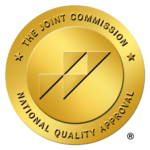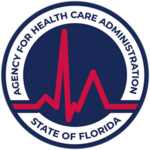Clonidine is a medication commonly used to manage opioid withdrawal symptoms. It has been proven to be highly effective in reducing the discomfort associated with substance use disorder. Clonidine works by acting on alpha-2 adrenergic receptors, which helps to calm down the overactive sympathetic nervous system during opioid withdrawal.
When it comes to dealing with opioid addiction, seeking medical help is crucial. One important aspect of treatment is the use of medication-assisted treatment (MAT) with Clonidine. This involves combining Clonidine with counseling and behavioral therapies to create a comprehensive approach to recovery.
If you or someone you know is struggling with opioid addiction, don’t hesitate to reach out to the admissions team at Milton Recovery Centers for professional support on your journey toward recovery.
How Clonidine Works for Withdrawals
Clonidine is classified as an alpha-2 adrenergic agonist, meaning it binds to alpha-2 receptors in the brain. This binding action reduces the release of norepinephrine, a neurotransmitter responsible for stimulating the sympathetic nervous system.
Mechanism of Action
By reducing norepinephrine levels, Clonidine effectively decreases hyperactivity in the sympathetic nervous system. This system is often overactive during opioid withdrawal, leading to symptoms such as:
- Increased heart rate
- Hypertension
- Anxiety
- Sweating
Clonidine’s action on alpha-2 receptors helps to normalize these physiological responses, easing the discomfort associated with withdrawal.
Sympathetic Nervous System and Withdrawal Symptoms
The sympathetic nervous system plays a crucial role in opioid withdrawal symptoms. When opioids are discontinued, the body experiences a surge in sympathetic activity due to the sudden absence of the drug’s depressant effects. This surge can manifest as:
- Tachycardia (rapid heart rate)
- Elevated blood pressure
- Restlessness
- Insomnia
Clonidine mitigates these symptoms by calming the exaggerated response of the sympathetic nervous system. This regulation is particularly beneficial during the initial stages of detoxification, making it easier for individuals to endure and complete their withdrawal process.
Understanding this mechanism underscores Clonidine’s pivotal role in managing opioid withdrawal and highlights its value as part of a comprehensive treatment plan.
Using Clonidine for Opioid Withdrawal
Administration, Dosage, and Duration
Administration Methods
Clonidine is usually given in tablet form, which makes it easy to use whether you’re receiving treatment at a clinic or staying at home. In a clinic or residential setting, doctors can closely monitor your condition and adjust the dosage if necessary. This helps ensure that you get the right amount of medication to help with withdrawal symptoms while minimizing any potential side effects.
Proper Dosage Guidelines
Using Clonidine correctly means following specific dosage guidelines to make sure it’s safe and effective for treating opioid withdrawal:
- Initial Dosage: Doctors usually start with a low dose to see how your body responds.
- Typical Range: The usual dosage is between 0.1 mg to 0.3 mg, taken two to four times a day.
- Adjustment: Your doctor may change the dosage based on how severe your withdrawal symptoms are and how well you’re responding to the medication.
The medical team at Milton Recovery Centers wants to stress how important it is not to take more or less Clonidine than prescribed. Using the wrong dosage can lead to inadequate relief from symptoms or cause unwanted effects like low blood pressure and drowsiness.
Duration of Detoxification Process
The length of time it takes to go through detox can vary depending on different factors, such as how dependent you are on opioids and your individual characteristics. Usually, the most intense phase of withdrawal lasts for about 7-10 days. Here’s what you can expect during this time:
- Early Phase (24-48 hours): You’ll start experiencing initial symptoms like anxiety, sweating, and restlessness.
- Peak Phase (2-5 days): Symptoms will be at their worst during this period; Clonidine can help ease severe symptoms such as muscle aches, irritability, and trouble sleeping.
- Late Phase (6-10 days): Symptoms will gradually improve; continuing to take Clonidine can help manage any remaining discomfort.
Clonidine is important during all these phases because it helps calm down the overactive sympathetic nervous system, which is responsible for many of the physical symptoms you experience during opioid withdrawal.
Making sure you take Clonidine correctly and follow the recommended dosage guidelines are crucial parts of effective medication-assisted treatment (MAT). When used properly, Clonidine can provide significant relief from withdrawal symptoms and make your journey to recovery smoother.
Benefits and Considerations
Key Benefits of Utilizing Clonidine for Opioid Withdrawal
Clonidine’s role in medication-assisted treatment (MAT) for opioid use disorder (OUD) lies in its ability to alleviate withdrawal symptoms. The primary benefits include:
- Reduced Discomfort: By acting on the sympathetic nervous system, Clonidine helps diminish the physical discomfort associated with opioid withdrawal. This includes alleviating symptoms such as sweating, agitation, and muscle aches.
- Decreased Cravings: Clonidine’s effectiveness in reducing cravings can significantly aid individuals in managing their dependency, thus supporting a smoother transition through the detoxification process.
Important Considerations When Using Clonidine
While Clonidine offers substantial benefits, it is crucial to consider several factors to ensure its safe and effective use:
- Symptomatic Treatment Approach: Clonidine primarily addresses the symptoms of withdrawal rather than the underlying addiction. This means that while it can make the detoxification process more bearable, it should be part of a comprehensive treatment plan that includes behavioral therapy and other support mechanisms.
- Potential for Misuse: There is a risk that Clonidine could be misused if not properly supervised. It should always be administered under medical guidance, particularly in inpatient or residential treatment settings where dosage can be closely monitored.
These considerations highlight both the efficacy and limitations of Clonidine as a component of MAT for OUD. Balancing these factors is essential for optimizing patient outcomes during opioid withdrawal.
Clonidine for Alcohol Use Disorder
Adjunctive Therapy for AUD Management
Clonidine has garnered attention for its potential role in managing alcohol use disorder (AUD), particularly during the detoxification phase. By acting as an alpha-2 adrenergic agonist, Clonidine helps mitigate withdrawal symptoms, which can be severe and debilitating. The withdrawal process from alcohol often includes symptoms such as:
- Anxiety
- Insomnia
- Tremors
- Sweating
- Elevated heart rate
These symptoms stem from hyperactivity in the sympathetic nervous system, similar to what occurs during opioid withdrawal. Clonidine’s ability to reduce this hyperactivity makes it a valuable tool in reducing the discomfort associated with alcohol detoxification.
Comparison with Other Medications
When considering medications for alcohol withdrawal syndrome, benzodiazepines are often the first line of treatment. Commonly prescribed benzodiazepines include:
- Diazepam (Valium)
- Lorazepam (Ativan)
- Chlordiazepoxide (Librium)
Benzodiazepines work by enhancing the effect of the neurotransmitter GABA at the GABA-A receptor, providing a sedative effect that helps alleviate anxiety and seizures associated with alcohol withdrawal.
In comparison, Clonidine works through a different mechanism. As an alpha-2 adrenergic agonist, Clonidine inhibits the release of norepinephrine, thus calming hyperactivity within the sympathetic nervous system. This distinction is crucial:
- Benzodiazepines: Directly enhance GABAergic activity leading to sedation and reduced anxiety.
- Clonidine: Reduces norepinephrine release, addressing autonomic overactivity without causing significant sedation.
This difference means Clonidine can be particularly useful for patients who may have contraindications to benzodiazepines or who require an adjunctive therapy to manage specific aspects of withdrawal.
Key Considerations
When using Clonidine as part of a treatment plan for AUD:
- Efficacy: While effective in managing certain withdrawal symptoms, Clonidine is primarily symptomatic and does not address cravings or prevent seizures.
- Safety Profile: Patients should be monitored for potential side effects such as hypotension and sedation.
- Combination Therapy: Often used in conjunction with other medications like benzodiazepines to provide comprehensive symptom relief.
Addressing alcohol use disorder requires a multifaceted approach. Incorporating medications like Clonidine into a broader treatment plan that includes medical supervision and supportive therapies can improve outcomes for individuals undergoing detoxification.
Ensuring Safe and Effective Use of Clonidine
Importance of Medical Supervision
Seeking professional medical supervision when considering Clonidine for withdrawal management is crucial. Clonidine can cause hypotension (low blood pressure) and sedation, which need to be monitored by a healthcare provider to prevent complications.
Common Side Effects and Mitigation Strategies
Clonidine may cause:
- Dry mouth
- Drowsiness
- Fatigue
- Constipation
To mitigate these side effects, patients are often advised to stay hydrated, eat a balanced diet, and get adequate rest. If side effects persist or worsen, consulting with a healthcare provider is essential.
Potential Drug Interactions
It’s important to be aware of potential interactions between Clonidine and other medications, especially those used in substance use disorder treatment. Medications like benzodiazepines or certain antidepressants can enhance sedation or hypotensive effects when taken with Clonidine. Always disclose all medications you are taking to your healthcare provider.
Personalized Advice at Milton Recovery Centers
For personalized advice on using Clonidine as part of a comprehensive medication-assisted treatment (MAT) plan, contacting Milton Recovery Centers can provide the support needed for effective and safe withdrawal management. Our team is dedicated to offering evidence-based approaches tailored to individual needs.
Note: This article is for informational purposes only and should not be considered medical advice. Please consult with a doctor before starting or changing any treatment plan for substance use disorder.
Clonidine for Medication Assisted Treatment at Milton Recovery Centers
Clonidine plays a crucial role in helping people through opioid and alcohol withdrawals. It works by reducing the intensity of withdrawal symptoms, making the detoxification process easier. This highlights the importance of comprehensive addiction treatment.
Using proven methods, medication-assisted treatment (MAT) combines Clonidine with other therapies under the guidance of medical professionals. This comprehensive approach improves recovery outcomes and promotes long-term sobriety. We are here 24 hours a day to answer questions about mental health and addiction. Please call our team to find out how we can help you or your loved one.







9 thoughts on “Clonidine: Uses, Dosage, Side Effects, Warnings”
With opioid addiction being such a widespread issue today, it’s encouraging to see effective medicines available to help those in need. This article is especially useful for people who need this medication and want to learn more about how it works and its possible side effects.
I had no idea that there was a medication to help with alcoholism! That is so amazing. Alcohol is so hard to kick, but most of the drugs out there have seemed to be focused on opioid withdrawal. I’m glad this can help both categories.
Thanks for the overview and guide to Clonidine. Yes! It’s super important to have this around-it may save someone’s life!
This is a very informative article about Clonidine. Clonidine really does work for those who are going through opioid and alcohol withdrawals, I remember back in the day when I was nursing, we had a guy who was suffering really bad from alcohol withdrawals, and we administered dosages to him and his symptoms were reduced significantly after a while.
Like so many drugs out there, it’s important for folks to be monitored if clonidine is prescribed. This was really useful information to read about, thank you!
This is a clear and informative overview that helps educate people about a drug they might not otherwise know about unless they need it. Having all the important details in one place makes it easy to understand, especially with other drug interactions.
What a great breakdown of Clonidine’s mechanism of action! It’s fascinating how it interacts with the alpha-2 receptors to help regulate the body’s response during opioid withdrawal. Understanding its role in easing those tough symptoms really highlights the importance of comprehensive treatment plans. Thanks for sharing this informative insight!
Love reading your blog posts and learning about new things especially in the medical world. It’s good to be informed and equipped with knowledge.
Oh….it’s good to know that Clonidine is usually useful for detox amongst AUD treatment. We have to keep our larger eye on it’s medicinal usage to prevent abuse.